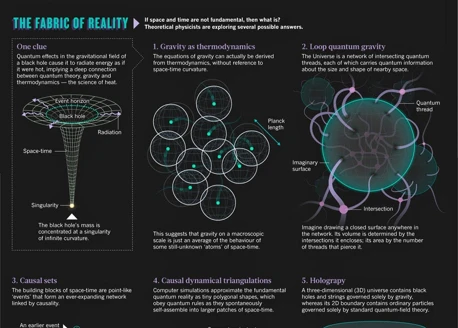Understanding the profound mysteries of the universe has been a never-ending quest for humanity. One of the most intriguing enigmas lies in the intersection of two fascinating branches of modern physics: quantum mechanics and general relativity. This convergence is embodied in the concept of quantum gravity, which seeks to unify these two fundamental theories. At the heart of this exploration are black holes, celestial objects of such immense gravity that they warp space and time. In this article, we delve into the captivating realm of quantum gravity and black holes, aiming to bridge the gap between these contrasting yet intertwined fields of study. Join us on this exhilarating journey through the cosmos as we uncover the secrets of the quantum world and unravel the mysteries hidden within black holes.
Contents
- What is Quantum Gravity?
- The Enigma of Black Holes
- Unifying Quantum Mechanics and General Relativity
- The Emergence of Hawking Radiation
- Black Holes as Quantum Information Processors
- Quantum Entanglement and Wormholes
- Beyond Singularities: The Singularity Conundrum
- Quantum Gravity Theories: Loop Quantum Gravity
- Quantum Gravity Theories: String Theory
- Exploring String Theory’s Possible Resolutions
- The Holographic Principle and Black Hole Entropy
- The Firewall Paradox
- Black Hole Information Paradox: Resolving the Puzzle
- Quantum Gravity and Black Hole Thermodynamics
- Experimental Insight: Probing Quantum Gravity with Black Holes
- The Future of Quantum Gravity and Black Holes
- Conclusion
-
Frequently Asked Questions
- FAQ 1: Is quantum gravity a proven theory?
- FAQ 2: Can quantum gravity explain the mysteries of black holes?
- FAQ 3: How does quantum gravity relate to string theory?
- FAQ 4: Can quantum gravity help us understand the birth of the universe?
- FAQ 5: Does the existence of dark matter impact quantum gravity?
- FAQ 6: Can quantum gravity explain the nature of time?
- FAQ 7: Is quantum gravity relevant to everyday life?
- FAQ 8: Can quantum gravity resolve the contradiction between general relativity and quantum mechanics?
- FAQ 9: Are there any experiments testing quantum gravity?
- FAQ 10: Will a better understanding of quantum gravity lead to technological advancements?
- References
-
Frequently Asked Questions
- 1. Can quantum gravity explain the mysterious nature of black holes?
- 2. How are black holes formed and what are their properties?
- 3. What is the event horizon of a black hole and why is it significant?
- 4. How does quantum mechanics relate to general relativity?
- 5. What is Hawking radiation and how does it emerge?
- 6. Can black holes act as quantum information processors?
- 7. What is the connection between quantum entanglement and wormholes?
- 8. Can quantum gravity resolve the singularity conundrum in black holes?
- 9. What are Loop Quantum Gravity and String Theory?
- 10. How can black hole thermodynamics provide insights into quantum gravity?
- References
- Read More
What is Quantum Gravity?
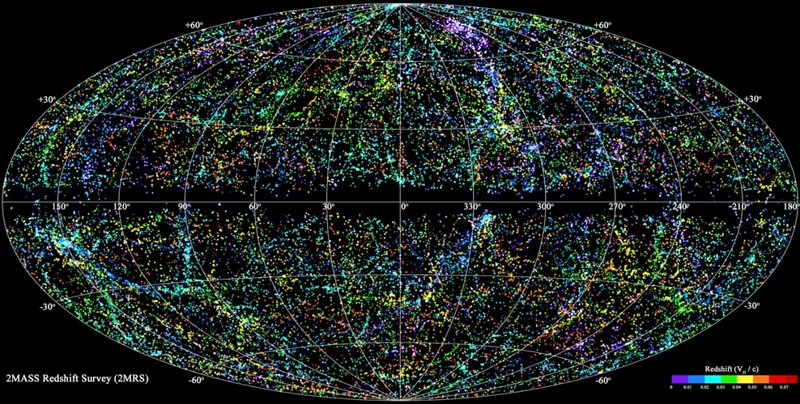
Quantum gravity is a field of study that aims to reconcile the principles of quantum mechanics with the theory of general relativity. This pursuit arises from the inherent conflict between these two seemingly incompatible theories, as quantum mechanics governs the behavior of particles on the smallest scales, while general relativity describes the behavior of gravity on cosmic scales. The crux of the challenge lies in the fact that gravity, according to general relativity, is a continuous and smooth force, while quantum mechanics deals with discrete particles and their interactions. The quest for quantum gravity seeks to resolve this apparent contradiction and provide a comprehensive framework that unifies the laws of the microscopic quantum world with the laws governing the macroscopic gravitational interactions. This pursuit is essential for understanding the fundamental nature of the universe and unlocking the mysteries of phenomena such as black holes and the early moments of the Big Bang. The journey towards comprehending quantum gravity is an ongoing endeavor for physicists, and it holds the promise of revolutionizing our understanding of the cosmos and our place within it.
The Enigma of Black Holes
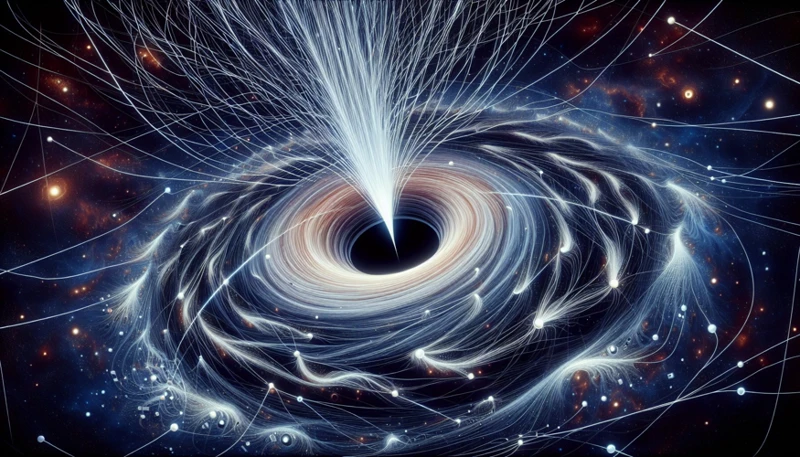
Black holes, the cosmic enigmas that have fascinated scientists and stargazers alike, are celestial objects with gravitational fields so intense that nothing, not even light, can escape. These mysterious entities form when massive stars exhaust their nuclear fuel and collapse under their own gravity, compressing matter to an infinitesimal point known as a singularity. The properties of black holes, such as their event horizons and immense gravitational pull, have captivated scientists for decades. Event horizons, the boundary beyond which no information can escape, present a mind-bending paradox, challenging our understanding of space and time. Yet, black holes also hold great allure, as they serve as cosmic laboratories where the laws of physics are pushed to their limits. They provide a unique opportunity to probe the interface between quantum mechanics and general relativity, shedding light on the deep mysteries of the universe. Exploring black holes is also crucial for comprehending the profound connections between gravity, quantum mechanics, and the fabric of spacetime itself. These enigmatic cosmic entities continue to fascinate and push the boundaries of our understanding, offering tantalizing glimpses into the hidden secrets of the cosmos.
Formation and Properties of Black Holes
The formation and properties of black holes are captivating and profound topics in astrophysics. Black holes originate from the collapse of massive stars, where the gravitational forces become so intense that they cause the star to collapse inward, creating a singularity, a point of infinite density and zero volume. An event horizon, a boundary beyond which nothing, not even light, can escape, surrounds the singularity. This point of no return marks the formation of a black hole. Once a black hole is formed, it exhibits several intriguing properties. First, it has an immense gravitational pull that warps space and time around it, creating a gravitational well. The strong gravitational forces near a black hole cause a phenomenon known as time dilation, where time appears to slow down for an outside observer relative to someone closer to the black hole. Additionally, black holes have a characteristic radius known as the Schwarzschild radius or the event horizon, which is directly proportional to their mass. Beyond the event horizon, the gravitational forces are so strong that even light cannot escape, making the black hole appear truly black to external observers. The study of black holes and their properties holds key insights into the nature of gravity, spacetime, and the behavior of matter in extreme conditions.
Understanding Event Horizons
Understanding event horizons is crucial in comprehending the nature of black holes and their gravitational influence. An event horizon is a boundary beyond which even light cannot escape the gravitational pull of a black hole. It is a point of no return, where the intense gravity warps space and time to such an extent that escape becomes impossible. This concept was first introduced by the physicist John Michell in the 18th century and further developed by Karl Schwarzschild in the early 20th century. Within the event horizon, the gravitational pull becomes so strong that it distorts the fabric of spacetime, creating a one-way path towards the singularity at the center of the black hole. Anything that passes through the event horizon, be it matter or energy, is inexorably drawn towards the heart of the black hole, where it is believed to be crushed into an infinitely dense point known as a singularity. The study of event horizons has led to profound insights into the behavior of black holes, their formation, and their role in shaping the universe. By investigating the properties and dynamics of event horizons, scientists continue to uncover the enigmatic nature of these cosmic entities and gain glimpses into the fundamental workings of our universe.
Unifying Quantum Mechanics and General Relativity
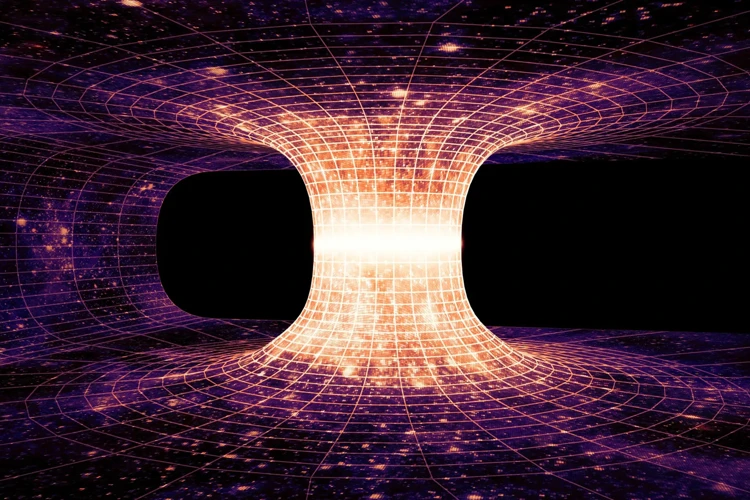
Unifying quantum mechanics and general relativity is one of the most challenging and ambitious goals in modern physics. While quantum mechanics successfully describes the behavior of particles on small scales and general relativity accurately explains gravity and spacetime on large scales, these two theories seem to clash when combined. The mathematical frameworks and principles that govern each theory differ greatly, leading to deep inconsistencies when attempting to merge them. Various approaches have been proposed to bridge this gap, including string theory, loop quantum gravity, and approaches based on quantum field theory. These attempts revolve around the notion of quantizing gravity, which involves treating gravity as a quantum force, just like the other fundamental forces in nature. However, finding a coherent and complete description that seamlessly combines quantum mechanics and general relativity remains a formidable challenge. The quest for a unified theory continues to inspire physicists to explore new mathematical models, conceptual frameworks, and experimental tests in the pursuit of a more profound understanding of the universe we inhabit. While the definitive resolution to this puzzle remains elusive, the journey towards unifying quantum mechanics and general relativity has undoubtedly contributed to remarkable advancements in theoretical physics and continues to push the boundaries of our knowledge.
The Emergence of Hawking Radiation
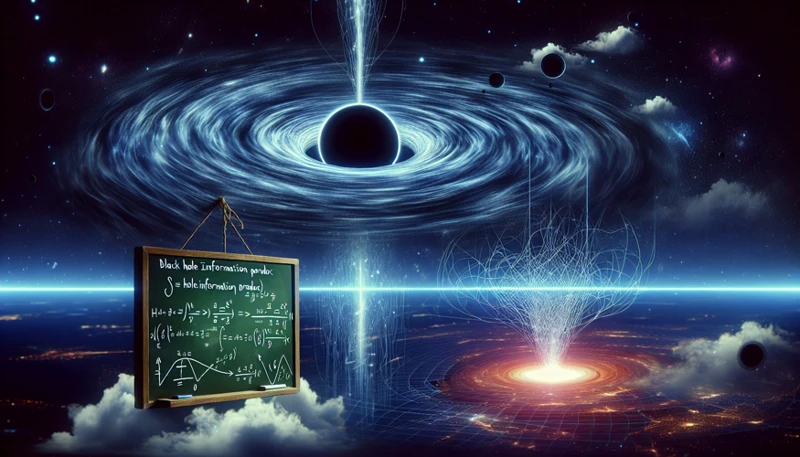
The emergence of Hawking radiation is a groundbreaking concept in the realm of black hole physics, presenting a unique perspective on the interplay between quantum mechanics and gravity. Proposed by renowned physicist Stephen Hawking in 1974, Hawking radiation suggests that black holes are not truly black, but rather emit a faint radiation that gradually causes their mass to decrease over time. This phenomenon stems from the quantum nature of particle interactions near the event horizon of a black hole. According to quantum field theory, particles and antiparticles constantly pop in and out of existence within a vacuum. Near the event horizon, however, this process becomes altered due to the intense gravitational field. Occasionally, particle-antiparticle pairs are created just outside the event horizon, with one particle falling into the black hole and the other escaping outwards as radiation. This process appears as if the black hole is radiating energy, hence the term “Hawking radiation.” The emitted radiation carries away energy from the black hole, leading to its gradual evaporation over time. This groundbreaking concept revolutionized our understanding of black holes, showcasing the profound link between quantum mechanics and gravity. It also suggested that black holes have a temperature and entropy, adding to their enigmatic nature within the framework of thermodynamics.
Reference:
Hawking, S. (1974). Black hole explosions?. Nature, 248(5443), 30-31.
Black Holes as Quantum Information Processors
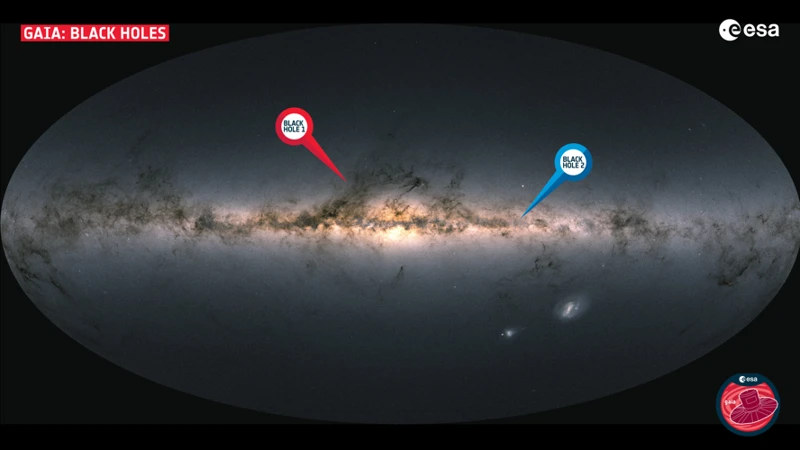
Black holes, with their immense gravitational pull and their ability to trap anything that crosses their event horizon, have long fascinated scientists and theorists. Recent research has shed light on the possibility of black holes acting as quantum information processors. In this intriguing concept, black holes are hypothesized to possess the capacity to store and manipulate quantum information. Quantum information processing relies on the principles of quantum mechanics, where information is not strictly binary but can exist in multiple states simultaneously, thanks to phenomena such as superposition and entanglement.
The idea of black holes as quantum processors stems from the black hole information paradox, which questions the fate of information that falls into a black hole. According to classical physics, information once consumed by a black hole would be destroyed, contradicting the principle that information cannot be lost. This paradox led to the proposal that black holes might actually encode information within their event horizons.
One prominent theory in this area is the holographic principle, which suggests that the information of objects within a certain region can be holographically encoded on its boundary. In the case of black holes, this boundary is known as the black hole’s event horizon. This theory posits that the information falling into a black hole is not obliterated but instead imprinted on its event horizon, preserved as a two-dimensional “hologram” encoding the three-dimensional content.
Recent studies have drawn parallels between the behavior of black holes and quantum computers. Quantum computers harness the power of subatomic particles to perform complex computations, and black holes are believed to possess similar processing capabilities due to their mysterious quantum nature. This link between black holes and quantum computing has opened up a fascinating field of research, blending astrophysics and quantum information theory.
While this idea of black holes as quantum information processors is still highly speculative, exploring this concept could have profound implications for our understanding of both black holes and quantum computing. By studying the potential connection between these two fields, scientists hope to uncover new insights into the nature of information, gravity, and the fundamental workings of the universe. Further research and investigation are needed to ascertain the validity of this captivating hypothesis and its potential impact on our understanding of black holes and the broader realm of quantum physics.
Quantum Entanglement and Wormholes
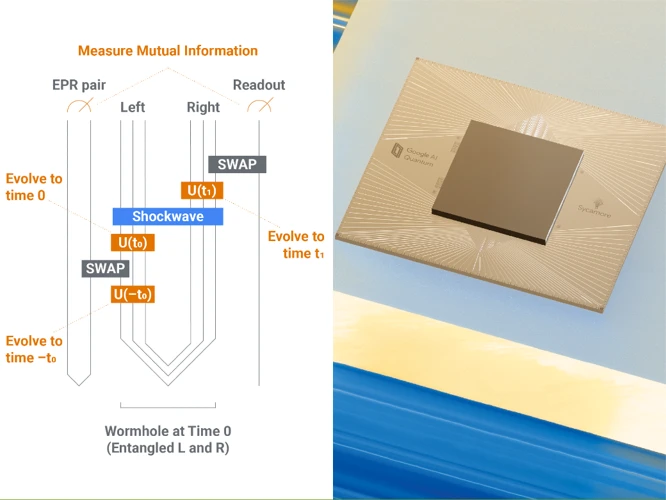
Quantum entanglement, a phenomenon rooted in the principles of quantum mechanics, plays a fascinating role in the study of quantum gravity and black holes. Entanglement occurs when two or more particles become interconnected in such a way that the state of one particle is instantaneously correlated with the state of another, regardless of the distance between them. This peculiar connection defies classical notions of causality and highlights the non-local nature of quantum physics. In the realm of black holes, quantum entanglement has been theorized to have a profound relationship with the concept of wormholes – hypothetical tunnels that could potentially connect distant regions of spacetime. It has been speculated that entangled particles on opposite sides of a black hole could be connected through a wormhole, providing a means for information or even matter to pass through. This tantalizing possibility has sparked conjectures about the role of entanglement in the fundamental fabric of the universe. While concrete evidence for these ideas remains elusive, the exploration of quantum entanglement and its connection to wormholes represents an intriguing avenue for understanding the interplay between quantum mechanics, gravity, and the enigmatic nature of black holes.
Beyond Singularities: The Singularity Conundrum
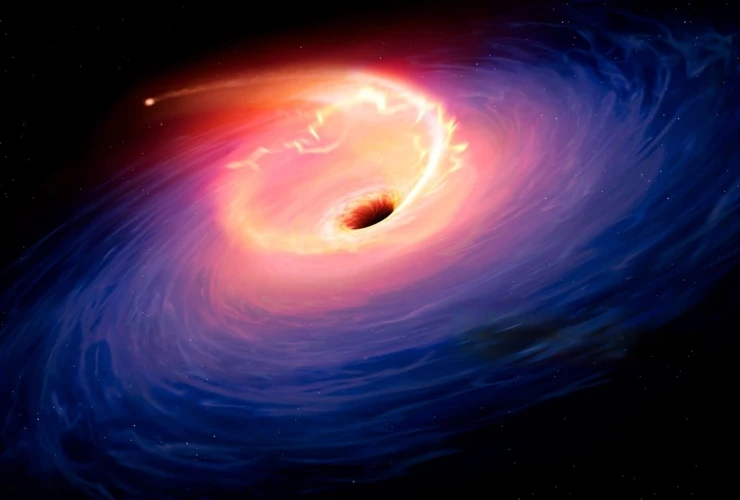
Beyond singularities lies the singularity conundrum, a perplexing puzzle that arises when applying quantum mechanics to black holes. In the classical theory of general relativity, black holes are predicted to have a singularity at their core—a point of infinite density and curvature where the laws of physics break down. However, according to quantum mechanics, infinities are not permissible, suggesting that a new framework is needed to describe black hole interiors. The singularity conundrum raises fundamental questions about the nature of space, time, and matter within the event horizon. One proposed solution to this enigma is the idea of a “firewall,” a hypothetical intense energy barrier that prevents objects from crossing the event horizon without obliterating them. This notion challenges our current understanding of black holes and has sparked lively debates among physicists. Another possibility is that black holes contain a hidden structure known as a “wormhole,” which could potentially connect different regions of spacetime. While these ideas hold promise for resolving the singularity conundrum, they present their own sets of challenges and unanswered questions. Ultimately, delving into the mysteries beyond singularities leads us to confront the limits of our current scientific knowledge and inspires the search for a deeper understanding of quantum gravity and the true nature of black holes. (See also: /the-enigmatic-nature-of-dark-matter/)
Quantum Gravity Theories: Loop Quantum Gravity
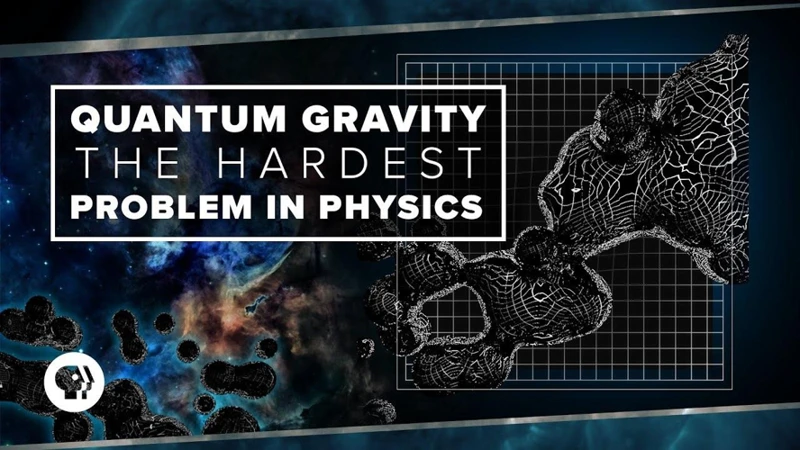
Loop Quantum Gravity (LQG) is one of the prominent theories in the quest for a quantum description of gravity. It proposes a discrete and granular structure of spacetime, where space is envisioned as being composed of interconnected loops or networks. In LQG, the fundamental building blocks are not particles, but rather quantized units of geometric properties such as area and volume. This granularity allows LQG to address the challenges posed by the singularities found in classical general relativity, such as those occurring in the centers of black holes or at the moment of the Big Bang. The theory suggests that these singularities are replaced by “bounces,” where the extreme curvature of spacetime undergoes a quantum transition before reaching complete collapse. This implies that LQG provides a consistent and coherent framework for understanding the nature of space and time on microscopic scales. However, like any theory, LQG also faces its share of challenges and open questions, such as how to incorporate matter fields into the framework or how to recover the smooth and continuous spacetime we observe on larger scales. Nevertheless, the development of LQG represents a significant step towards uncovering the secrets of quantum gravity and holds the potential to revolutionize our understanding of the fundamental fabric of the universe.
Quantum Gravity Theories: String Theory
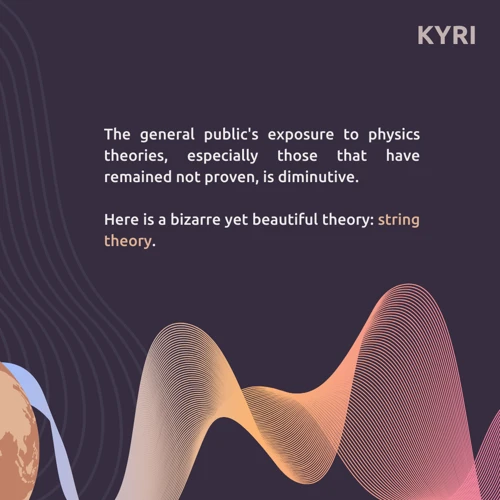
String Theory is one of the prominent candidates for a theory of quantum gravity. It posits that fundamental particles and forces in the universe are not point-like but instead arise from tiny, vibrating strings. These strings exist in higher-dimensional spacetimes beyond our familiar three dimensions of space and one dimension of time. String Theory incorporates both quantum mechanics and general relativity, providing a framework to unify and harmonize their principles. One of the intriguing aspects of String Theory is that it allows for the existence of multiple universes or dimensions, known as the “multiverse.” Within this multiverse, each universe could have different physical properties and laws of nature. String Theory also introduces the fascinating concept of extra dimensions, beyond the familiar three spatial dimensions, often curled up and compactified at microscopic scales. This theory has the potential to explain phenomena such as the nature of dark energy and matter, as well as address the fundamental question of why gravity is significantly weaker compared to other fundamental forces. However, it is important to note that String Theory is still highly speculative and lacks experimental confirmation. Nevertheless, researchers continue to explore its mathematical intricacies and implications, with hopes of unlocking the mysteries of quantum gravity and the nature of our universe.
Exploring String Theory’s Possible Resolutions
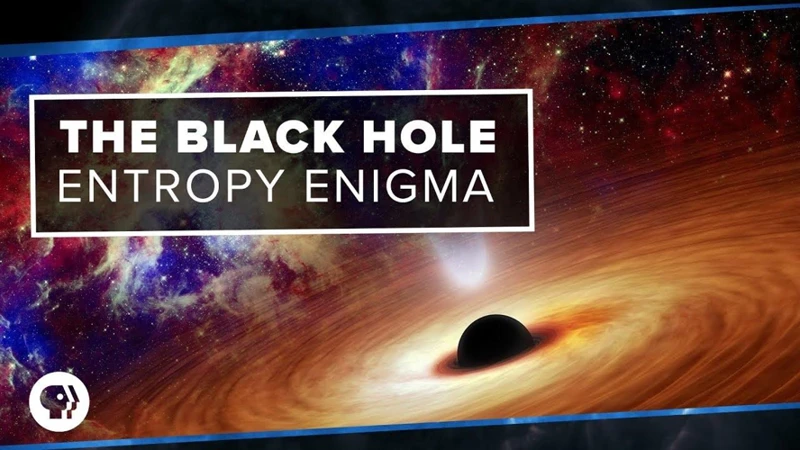
As one of the most prominent candidates for a theory of quantum gravity, string theory has captivated physicists for decades. However, it faces a unique challenge – the theory exists in multiple possible configurations known as “string vacua.” Each of these configurations represents a potential solution to the equations of string theory and describes a different universe with its own physical properties. This vast landscape of string vacua, known as the “multiverse,” presents a perplexing issue: how do we determine which configuration corresponds to our reality? This question has sparked intense exploration and debate within the field. One potential resolution is the idea of the anthropic principle, which suggests that the laws of physics in our universe are the result of a selection process, where only the configurations allowing the existence of complex structures (such as galaxies and life) are observable. Another possibility lies in the concept of a “landscape measure,” which assigns probabilities to different string vacua based on various criteria. These approaches aim to provide a framework for selecting the most likely configuration from the multitude of possibilities offered by string theory. Despite the challenges, physicists continue to delve into the depths of string theory, seeking insights that may unlock the secrets of quantum gravity and shed light on the ultimate nature of the universe.
The Holographic Principle and Black Hole Entropy
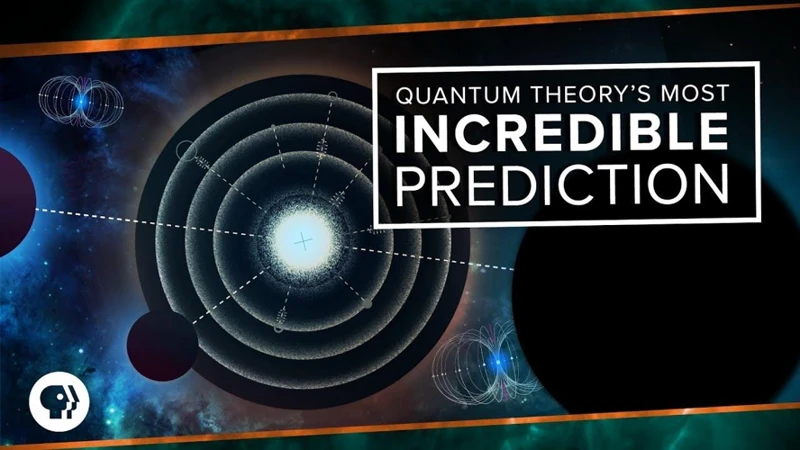
Central to our understanding of the interplay between quantum gravity and black holes is the intriguing concept known as the holographic principle. According to this principle, the information contained within a three-dimensional region of space can be encoded on a two-dimensional surface surrounding that region. In other words, the holographic principle suggests that the physics inside a given volume can be fully described by the physics on its boundary. This idea has far-reaching implications for the study of black holes and their entropy. Entropy, in the context of black holes, is a measure of the information content contained within the region controlled by the black hole’s gravity. The holographic principle implies that the entropy of a black hole is encoded in the number of microscopic degrees of freedom located on its event horizon, the boundary that separates the inside and outside of the black hole. This concept has led to the realization that the entropy of a black hole is proportional to the surface area of its event horizon rather than the volume it encloses. This revelation has profound implications, as it suggests a deep connection between the quantum nature of information and the gravitational properties of black holes. The holographic principle has paved the way for exciting research in understanding the fundamental nature of space, time, and information. It has also opened avenues for exploring the limits and boundaries of our current understanding of quantum gravity. As scientists continue to unravel the mysteries surrounding the holographic principle and black hole entropy, we gain further insights into the nature of the universe and the profound interplay between quantum mechanics and gravity.
The Firewall Paradox

The Firewall Paradox is a fascinating conundrum arising from the union of quantum mechanics and general relativity through the lens of black holes. According to general relativity, as an object approaches the event horizon of a black hole, it should experience nothing out of the ordinary. However, quantum mechanics introduces a new perspective. Quantum entanglement suggests that any two particles that have interacted in the past remain connected, regardless of their spatial separation. Considering this, it is proposed that the particles falling into the black hole become entangled with particles that have previously entered the black hole. This leads to a paradoxical situation known as the Firewall Paradox. The paradox suggests that the region near the event horizon of a black hole must be filled with an intense energy that would incinerate anything crossing it, contradicting the smooth passage described by general relativity. The Firewall Paradox challenges our understanding of black holes and places the concept of event horizons in question. Physicists have been grappling with this paradox, seeking a resolution that can harmonize the principles of quantum mechanics and general relativity. Exploring this paradox is crucial for furthering our understanding of the fundamental nature of black holes and the nature of gravity itself.
Black Hole Information Paradox: Resolving the Puzzle
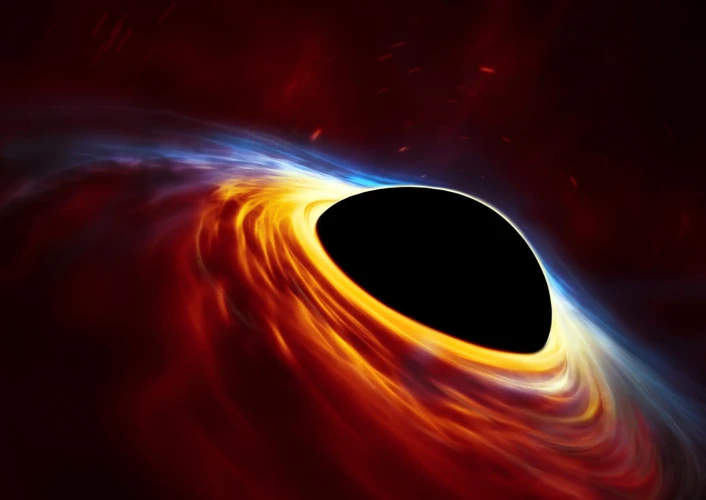
The Black Hole Information Paradox is a perplexing puzzle that has confounded physicists for decades. It arises from the clash between the principles of quantum mechanics and the classical theory of gravity, as described by general relativity. According to classical physics, when matter falls into a black hole, all information about that matter seems to be lost forever, as nothing can escape the black hole’s event horizon. This outcome directly violates the fundamental tenets of quantum mechanics, which state that information cannot be destroyed.
Resolving this paradox has been a major focus in the field of quantum gravity. One proposed solution comes from the work of physicist Stephen Hawking, who theorized that black holes emit radiation now known as Hawking radiation. This radiation carries away energy from the black hole, resulting in the eventual evaporation and disappearance of the black hole over an extremely long timescale. Hawking suggested that the information of the matter that fell into the black hole might be encoded in this radiation, providing a possible resolution to the paradox.
However, the exact mechanism by which information is preserved in Hawking radiation remains a topic of ongoing research and debate. Some proposals suggest that the information is encoded in subtle correlations between the emitted radiation particles, while others explore the possibility of exotic structures such as wormholes that connect different regions of spacetime.
Further progress in understanding the Black Hole Information Paradox requires a deeper understanding of the interplay between gravity and quantum mechanics. Efforts are being made to develop theories of quantum gravity that can account for the behavior of black holes and the preservation of information. Solving this paradox would not only answer a fundamental question about the nature of black holes but also provide valuable insights into the nature of information and the fundamental laws of the universe.
The Black Hole Information Paradox underscores the need for a complete theory of quantum gravity that can reconcile the principles of quantum mechanics with the classical theory of gravity. With ongoing research and advancements in the field, scientists are dedicated to unraveling the mysteries of black holes and resolving this captivating puzzle that lies at the intersection of quantum mechanics and general relativity.
Quantum Gravity and Black Hole Thermodynamics
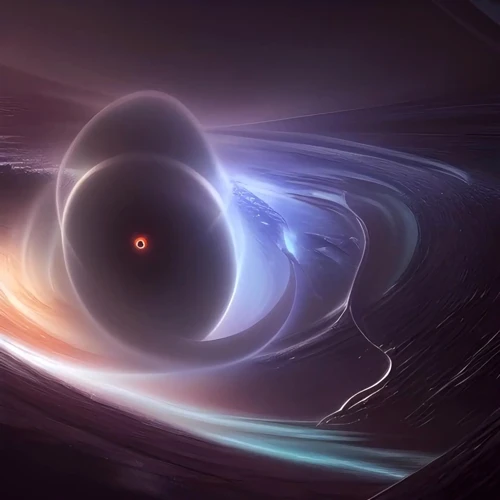
Quantum gravity and black hole thermodynamics are intricately connected, shedding light on the profound relationship between gravity and the microscopic world. The study of black hole thermodynamics emerged from the realization that black holes possess certain qualities analogous to thermodynamic systems. Just as temperature, entropy, and energy are central concepts in classical thermodynamics, black holes exhibit similar properties. For instance, black holes have entropy, and their entropy is proportional to the area of their event horizon, known as the Bekenstein-Hawking entropy. This discovery suggests a deep connection between the microscopic and macroscopic worlds, bridging the gap between quantum mechanics and general relativity. Through the lens of quantum gravity, black hole thermodynamics offers insights into the behavior of black holes at the quantum level, hinting at a deeper understanding of the mysterious nature of these cosmic entities. The exploration of quantum gravity and black hole thermodynamics translates into deciphering the underlying rules governing the behavior of black holes, which could have significant implications for our understanding of the universe’s fundamental workings. By unraveling the relationship between gravity and quantum mechanics in this context, scientists aim to unlock new insights into the fabric of spacetime and the nature of gravity itself. The interplay between quantum gravity and black hole thermodynamics continues to captivate researchers, propelling us closer to unraveling the enigmatic secrets of the cosmos.
Experimental Insight: Probing Quantum Gravity with Black Holes
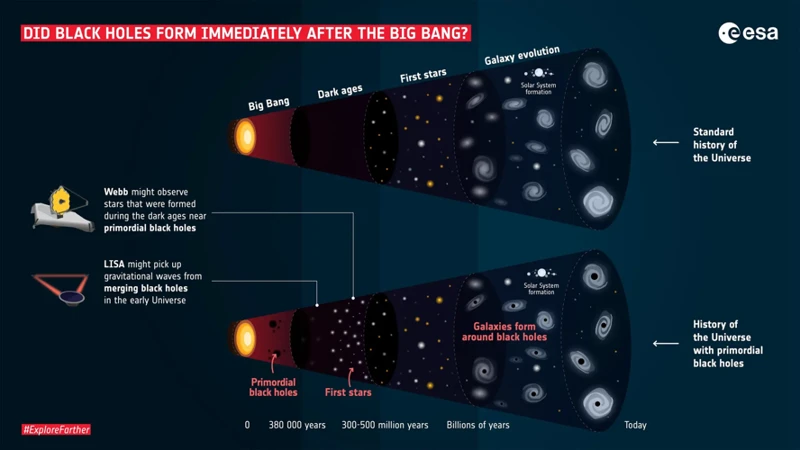
When it comes to probing the intricacies of quantum gravity, black holes serve as crucial laboratories for experimental exploration. These cosmic phenomena possess immense mass and gravity, which allows scientists to test the boundaries of our current understanding. One avenue of investigation is through the observation of black hole mergers and gravitational waves, which provide valuable insights into the behavior of space-time in extreme conditions. The Laser Interferometer Gravitational-Wave Observatory (LIGO), for instance, has successfully detected gravitational waves originating from the collisions of black holes. These observations not only confirm the existence of black holes but also provide empirical evidence that supports the predictions made by general relativity. Additionally, scientists explore the quantum behavior of black holes through the study of black hole thermodynamics. This field investigates properties such as entropy and temperature, aiming to establish connections between quantum mechanics and black hole physics. Ongoing research focuses on utilizing astrophysical observations to gain further understanding of quantum gravity, such as examining the Hawking radiation emitted by black holes and its implications. By delving into these phenomena and analyzing their behavior, researchers are pushing the boundaries of knowledge and uncovering new insights into the intricate relationship between quantum mechanics and gravity. The endeavor to probe quantum gravity through the lens of black holes continues to be an exciting and evolving frontier in modern physics.
The Future of Quantum Gravity and Black Holes
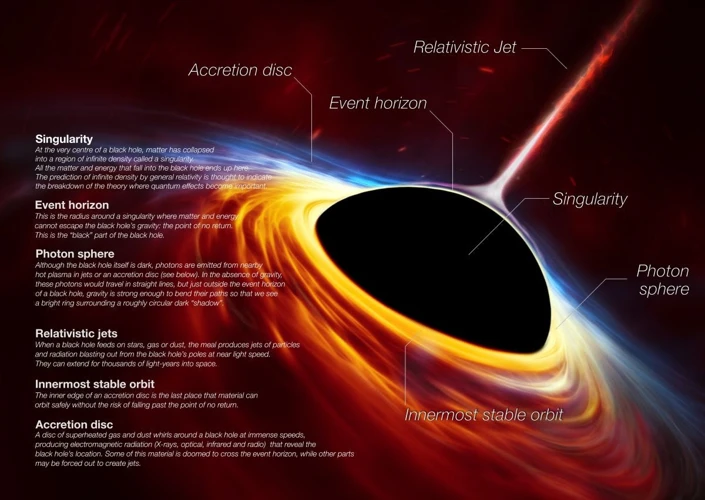
The future of quantum gravity and black holes holds immense promise for unraveling the deepest mysteries of the universe. Researchers continue to explore various theoretical frameworks and mathematical approaches to bridge the gap between general relativity and quantum mechanics. One avenue of exploration is the development of novel quantum gravity theories, such as loop quantum gravity and string theory, which offer different perspectives on the nature of spacetime and the behavior of particles at the smallest scales. These theories aim to provide a comprehensive understanding of how gravity emerges from the quantum realm and how black holes fit into this intricate tapestry. Additionally, experiments and observations play a crucial role in advancing our understanding of quantum gravity and black holes. Scientists are actively probing the properties of black holes, studying their gravitational waves, using telescopes to peer into their event horizons, and even contemplating the potential connections between black holes and dark matter. These cutting-edge investigations hold the promise of unveiling new insights into the fundamental laws of physics and expanding our knowledge of the cosmos. As our understanding deepens, the future of quantum gravity and black holes may hold not only answers to long-standing questions but also new avenues of exploration, revolutionizing our understanding of the universe and our place within it.
Conclusion

In conclusion, the pursuit of understanding quantum gravity and its connection to black holes is a never-ending quest that challenges the boundaries of our knowledge and pushes the limits of human comprehension. The journey into the depths of quantum mechanics and the enigmatic nature of black holes has revealed fascinating insights and raised profound questions about the fundamental nature of the universe. While significant progress has been made in theories such as loop quantum gravity and string theory, there is still much more to uncover and explore. The emergence of concepts like Hawking radiation, the holographic principle, and the resolution of the black hole information paradox provide glimpses into the intricate interplay between gravity, quantum mechanics, and information. As we move forward, new experiments and observations will continue to shed light on these cosmic mysteries, bringing us closer to a deeper understanding of the quantum nature of reality and the profound implications it holds for our existence. Whether it leads us to a greater understanding of the fabric of spacetime or uncovers entirely new and unexpected revelations, the journey into the world of quantum gravity and black holes will undoubtedly shape the future of physics and our understanding of the cosmos.
Frequently Asked Questions

FAQ 1: Is quantum gravity a proven theory?
No, quantum gravity is still a theoretical framework that scientists are actively working on. While there are promising theories and mathematical models, experimental confirmation is currently beyond our reach due to the extreme conditions required.
FAQ 2: Can quantum gravity explain the mysteries of black holes?
Quantum gravity provides a potential avenue for understanding black holes at a fundamental level. By combining principles from both quantum mechanics and general relativity, scientists hope to unravel the paradoxes and puzzles associated with black holes, such as their information loss and the nature of their singularities.
FAQ 3: How does quantum gravity relate to string theory?
String theory is one of the candidate theories for achieving quantum gravity. It posits that rather than fundamental particles, the building blocks of the universe are tiny vibrating strings. These strings give rise to both gravity and other forces, providing a framework that combines quantum mechanics with gravity.
FAQ 4: Can quantum gravity help us understand the birth of the universe?
Yes, quantum gravity plays a crucial role in understanding the early moments of the universe, particularly during the Big Bang. By integrating quantum effects into the theory of gravity, scientists can explore the mysteries of the universe’s inception and the fundamental laws governing its evolution.
FAQ 5: Does the existence of dark matter impact quantum gravity?
While quantum gravity and dark matter are separate areas of research, they both contribute to our understanding of the universe. Dark matter, which interacts gravitationally but is not yet directly detected, poses interesting questions for the unification of quantum mechanics and gravity.
FAQ 6: Can quantum gravity explain the nature of time?
Quantum gravity theories aim to reconcile the discreteness of quantum mechanics with the continuous nature of time in general relativity. These theories explore the fundamental scales of time and seek to uncover the nature of time’s arrow, providing potential insights into the origins and behavior of time itself.
FAQ 7: Is quantum gravity relevant to everyday life?
Quantum gravity theories primarily apply to extreme cosmic situations, such as black holes and the early universe. However, any breakthroughs in understanding quantum gravity may have far-reaching implications for technology, energy, and our understanding of the universe, even if their immediate impact on everyday life might not be apparent.
FAQ 8: Can quantum gravity resolve the contradiction between general relativity and quantum mechanics?
Quantum gravity seeks to unify general relativity and quantum mechanics into a coherent framework. By providing a consistent description of gravity at the quantum level, it aims to bridge the gap between these two fundamental theories and overcome the contradictions that arise in their current formulations.
FAQ 9: Are there any experiments testing quantum gravity?
Testing quantum gravity experimentally is incredibly challenging due to the high energy scales and small distance scales involved. However, scientists are exploring indirect experimental tests, such as studying the behavior of black holes, searching for gravitational waves, and investigating the cosmic microwave background radiation for potential signatures of quantum gravity.
FAQ 10: Will a better understanding of quantum gravity lead to technological advancements?
While it’s challenging to predict the exact technological advancements that may arise from a deeper understanding of quantum gravity, past scientific breakthroughs have often paved the way for unexpected applications. From the development of quantum mechanics itself to technological breakthroughs in fields like computing and communications, scientific understanding has historically led to transformative advancements with immense practical implications.
References
- Black Holes and Quantum Gravity | Aurélien Barrau | Inference
- Bridging the Chasm Between Quantum Physics and …
Frequently Asked Questions

1. Can quantum gravity explain the mysterious nature of black holes?
Yes, quantum gravity attempts to bridge the gap between quantum mechanics and general relativity to provide a comprehensive understanding of black holes and their properties.
2. How are black holes formed and what are their properties?
Black holes are formed from the collapse of massive stars, where their immense gravity causes the matter to condense into an infinitely dense singularity surrounded by an event horizon, trapping everything within its gravitational pull.
3. What is the event horizon of a black hole and why is it significant?
The event horizon is the point of no return surrounding a black hole from which nothing, not even light, can escape. It is significant because it defines the boundary of the black hole and marks the point at which the laws of physics as we know them break down.
4. How does quantum mechanics relate to general relativity?
Quantum mechanics describes the behavior of particles at the microscopic level, while general relativity explains the force of gravity and the curvature of spacetime. Quantum gravity aims to unify these two theories to provide a consistent framework for understanding the fundamental nature of the universe.
5. What is Hawking radiation and how does it emerge?
Hawking radiation is a theoretical prediction by physicist Stephen Hawking that suggests black holes are not completely black but emit a faint radiation due to quantum effects near the event horizon. It emerges from the quantum fluctuations of virtual particles near the black hole’s boundary.
6. Can black holes act as quantum information processors?
While it is still a subject of ongoing research, some theories suggest that black holes could potentially process and store quantum information. This idea arises from the notion that black holes possess entropy and could, therefore, have the capacity to encode and manipulate information.
7. What is the connection between quantum entanglement and wormholes?
Quantum entanglement is a phenomenon where particles become linked and share properties instantaneously, regardless of distance. Some physicists speculate that wormholes, hypothetical shortcuts in spacetime, could be created using entangled particles as a means of bridging vast cosmic distances.
8. Can quantum gravity resolve the singularity conundrum in black holes?
Quantum gravity theories offer potential resolutions to the singularity problem, suggesting that the infinite density at the center of a black hole may not be valid. These theories propose alternative models where the singularity is replaced by a compact, highly dense object known as a “quantum bounce.”
9. What are Loop Quantum Gravity and String Theory?
Loop Quantum Gravity and String Theory are two prominent contenders for a quantum theory of gravity. Loop Quantum Gravity proposes that spacetime is quantized into discrete loops, while String Theory suggests that fundamental particles are not point-like objects but tiny, vibrating strings.
10. How can black hole thermodynamics provide insights into quantum gravity?
Black hole thermodynamics, a field combining quantum mechanics and general relativity, explores the behavior of black holes as thermodynamic systems with properties like temperature, entropy, and energy. By studying the thermodynamics of black holes, scientists hope to gain insights into the fundamental nature of quantum gravity.

